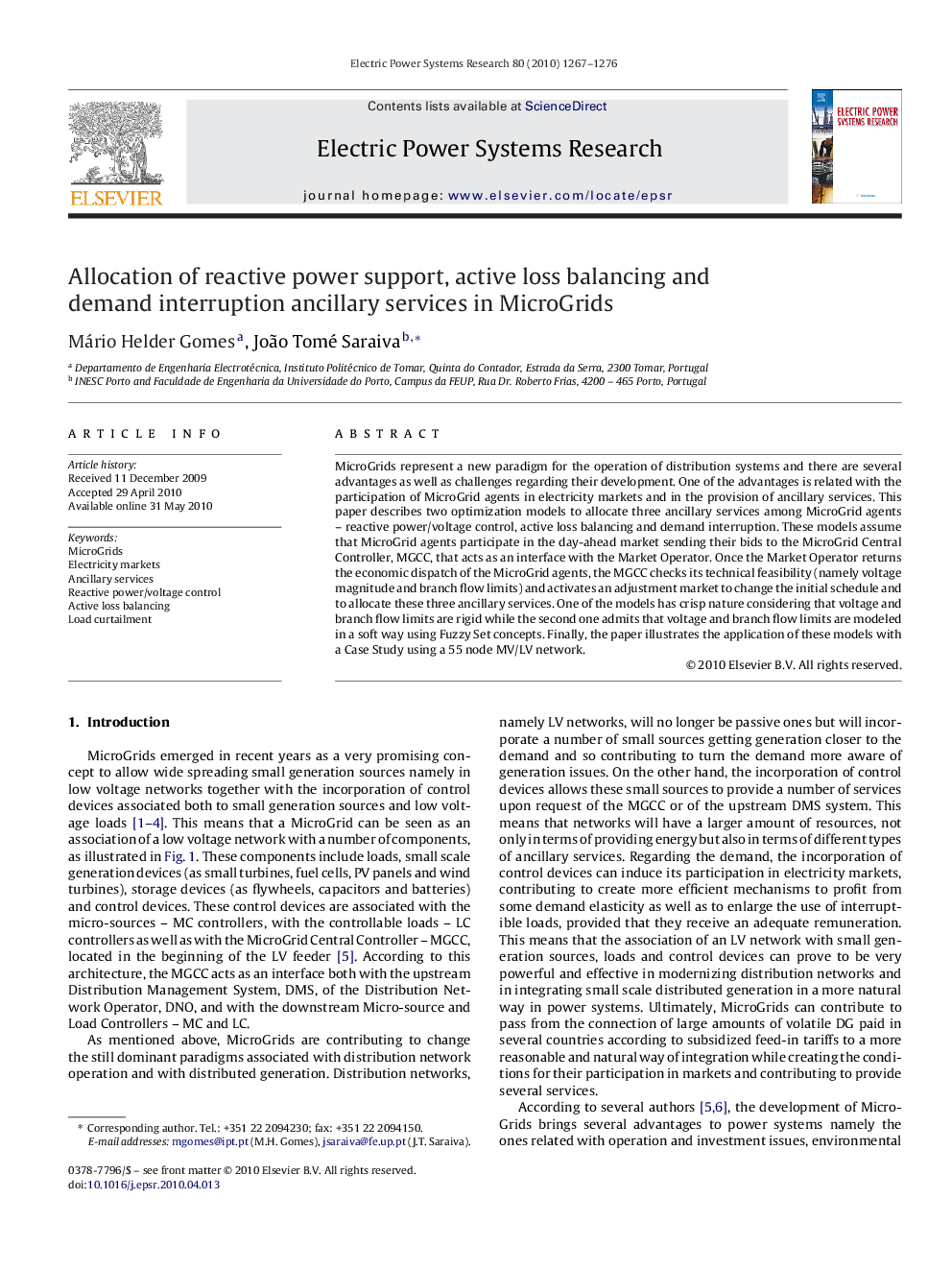| Article ID | Journal | Published Year | Pages | File Type |
|---|---|---|---|---|
| 705717 | Electric Power Systems Research | 2010 | 10 Pages |
MicroGrids represent a new paradigm for the operation of distribution systems and there are several advantages as well as challenges regarding their development. One of the advantages is related with the participation of MicroGrid agents in electricity markets and in the provision of ancillary services. This paper describes two optimization models to allocate three ancillary services among MicroGrid agents – reactive power/voltage control, active loss balancing and demand interruption. These models assume that MicroGrid agents participate in the day-ahead market sending their bids to the MicroGrid Central Controller, MGCC, that acts as an interface with the Market Operator. Once the Market Operator returns the economic dispatch of the MicroGrid agents, the MGCC checks its technical feasibility (namely voltage magnitude and branch flow limits) and activates an adjustment market to change the initial schedule and to allocate these three ancillary services. One of the models has crisp nature considering that voltage and branch flow limits are rigid while the second one admits that voltage and branch flow limits are modeled in a soft way using Fuzzy Set concepts. Finally, the paper illustrates the application of these models with a Case Study using a 55 node MV/LV network.
